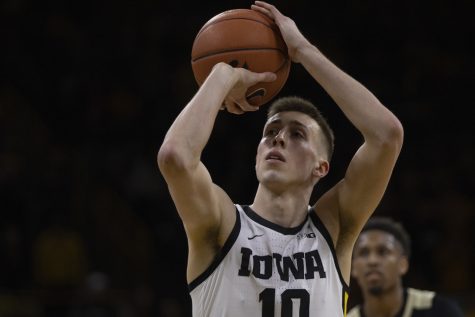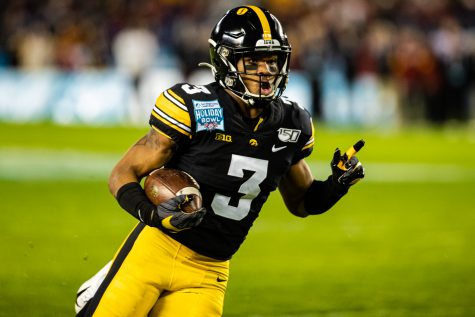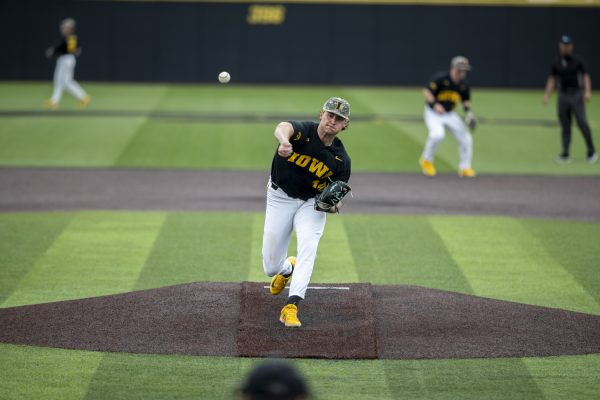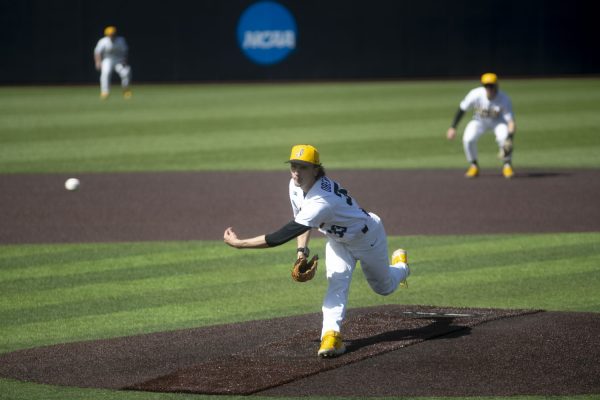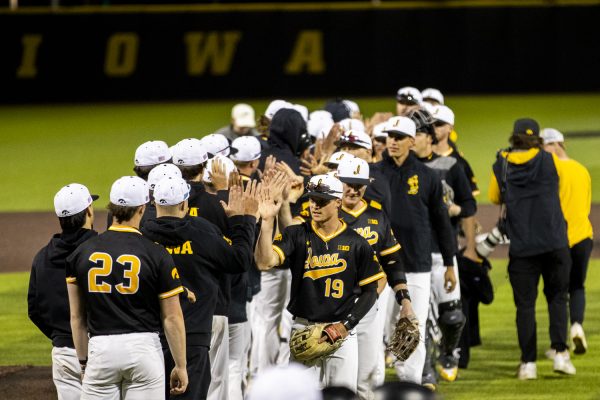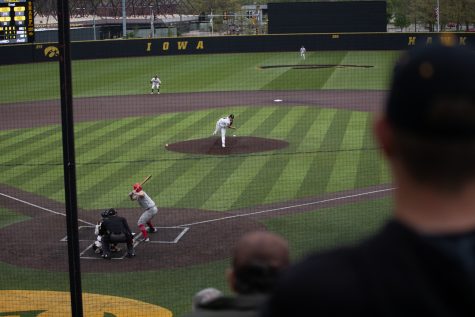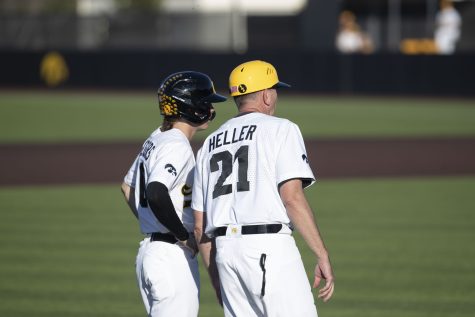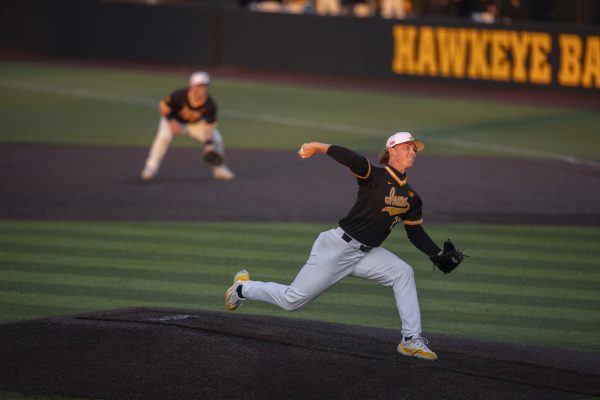Iowa baseball adjusts to aluminum bats after summer leagues
Coaches say that the difference between aluminum and wood bats are minimal.
Iowa head coach Rick Heller gestures to his team during a baseball game between Iowa and Grand View at Duane Banks Field on March 3, 2020. The Hawkeyes defeated the Vikings 15-2.
October 20, 2020
With the Hawkeye baseball team back in Iowa City for fall practice, many of its members have switched to using aluminum bats.
A majority of the team participated in collegiate summer leagues around the country this summer, which use wood bats like professional baseball leagues.
Iowa head coach Rick Heller said it was good for the players to get time playing with wood bats, especially for those who hope to go into professional baseball after college.
While collegiate summer leagues and professional baseball leagues use wooden bats, colleges nationwide have stuck with providing aluminum bats to their teams.
Both Heller and Iowa hitting coach Jimmy Frankos said the main reason college baseball uses aluminum bats instead of wood is the cost of the bats.
While aluminum bats can cost upward of $300, Frankos said, they rarely will break. Wood bats vary in price, depending on the quality of the wood, but those break frequently, which ups the overall cost. College baseball programs would not be able to keep up with the cost of constantly buying quality wood bats.
“The factor that a lot of people don’t know about — they just say ‘Oh, they should use wood,’” Heller said. “Well one, wood bats cost a lot, and two, there’s only so much good wooden bats out there, so like the wooden bats that you see them using in the Major Leagues would not be the same bats that you would see us using … it would be an inferior product.”
RELATED: Hawkeye baseball turns to intrasquad scrimmages
The main difference between aluminum and wood bats is the “room to miss,” Frankos said.
“If you’re using an aluminum bat, you have more room on the bat for error, basically,” Frankos said. “Not a ton of more room, but there is more. If you miss that barrel [on a wood bat], you miss that sweet spot, and let’s say you get it jammed or hit it off the end, there’s a good chance that one, the ball’s not going very far, and two, that that wood bat’s breaking.”
Wood bats are also able to be customized to the athlete. They can decide to make their wood bat as light or heavy as they want, but aluminum bats have a set weight and length distribution of three ounces — if a bat is 33 inches long, it has to weigh 30 ounces.
Frankos said the difference between the bats becomes less noticeable as the athlete gets older. Younger players are usually able to create more power off an aluminum bat, but it diminishes, and the power becomes more comparable to a wooden bat as the player gets older.
Heller said that the new bats that the team switched to several years ago – ‘BBcor’ aluminum bats – are even more similar to wood bats, at least in terms of exit velocity.
“It’s not like it used to be, where the [aluminum] bats were juiced up and the exit velocity was so much greater than a wooden bat,” Heller said.
Frankos said, despite the different bats, players usually can’t tell the difference in the heat of the moment.
“When you’re in the game, and when you’re swinging it, I don’t think they’ll be able to tell the difference,” Frankos said. “The swing doesn’t change at all, so you don’t really think about it much.”




